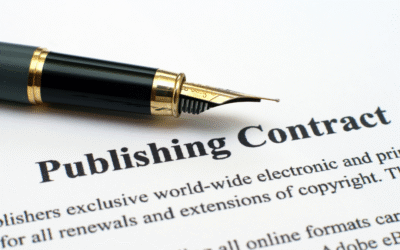There’s a world of opportunity waiting for you in writing. Crafting a successful book involves more than just putting words on a page; it requires a blend of strategy, creativity, and understanding of your audience. In this post, you will discover practical tips and insights to help you navigate the writing process, refine your ideas, and ultimately transform your vision into a finished manuscript that resonates with readers and stands out in the crowded market.
Understanding Your Audience
A key element in writing a successful book is understanding your audience. Knowing who your readers are will help you tailor your content and message to resonate with them. This involves recognizing their interests, preferences, and the needs they hope to fulfill through your writing. By connecting with your audience on this level, you can craft a narrative that captivates and engages, making your book more appealing and relevant.
Identifying Target Readers
Among the first steps in understanding your audience is identifying who your target readers are. Consider their demographics, such as age, gender, and education level, as well as their interests and challenges. This insight will enable you to create characters, themes, and ideas that resonate with them, ultimately driving engagement and satisfaction with your work.
Researching Market Trends
About understanding your audience, researching market trends plays a significant role in identifying what readers currently seek in literature. This entails exploring bestselling books within your genre, examining reviews, and participating in online forums where readers discuss their preferences. Gaining insights on popular themes, character archetypes, and writing styles can guide you in crafting a book that aligns with reader expectations.
Another effective way to research market trends is by utilizing tools like social media and online book retailers. Sites like Goodreads and Amazon allow you to not only see what books are trending but also read user reviews to learn what readers appreciate or critique. Engaging with writing communities and attending literary events can further enhance your understanding, giving you a more nuanced perspective of the market landscape. By staying informed about these trends, you position yourself to write a book that speaks to current reader desires.
Developing Your Book Concept
Clearly, the foundation of a successful book lies in a well-developed concept. This stage involves a deep probe your ideas, where you assess your passion, target audience, and market trends. Clarifying your vision will help you create an engaging narrative that resonates with readers. By analyzing these elements, you can define a clear direction for your writing journey, ensuring that your book stands out in a crowded marketplace.
Choosing a Compelling Genre
Your choice of genre significantly impacts your book’s success. By selecting a genre that aligns with your interests and writing style, you ensure a more authentic and passionate writing experience. Consider the preferences of your target audience and the current trends within various genres. This will not only help you streamline your focus but also enhance your chances of attracting readers who are eager for the stories you want to tell.
Crafting a Unique Premise
About creating a unique premise, it’s vital to think outside the box. A distinctive premise sets your book apart and draws in readers who seek fresh perspectives. Focus on combining relatable themes with unexpected twists, or develop characters that challenge traditional archetypes. You can generate intriguing conflicts or explore unique settings, turning familiar elements into something wholly original.
Understanding the elements that make a premise unique requires you to analyze existing literature and identify gaps within your chosen genre. Study successful books and ask yourself what makes them stand out. Engage your creativity to find new ways to approach common topics, ensuring that your narrative offers something distinctive. Ultimately, a compelling premise can captivate potential readers and establish a strong foundation for your book’s plot and characters.
Creating a Writing Plan
While writing a successful book can feel overwhelming, creating a structured writing plan will guide you through the process. This plan should break down your project into manageable sections, allowing you to focus on one task at a time. Consider incorporating time for research, drafting, and revisions to ensure that your creativity flows freely without unnecessary pressure. Your writing plan will serve as a roadmap, helping you stay organized and motivated as you progress toward your final manuscript.
Setting Goals and Deadlines
With clear goals and deadlines in place, you can maintain a steady pace in your writing journey. Establish short-term and long-term objectives, such as completing a chapter each week or finishing your first draft by a specific date. This structured approach will keep you accountable and motivated while providing a clear sense of achievement as you reach each milestone along the way.
Outlining Your Content
About outlining your content, this critical step acts as a foundation for your writing, ensuring each section flows logically and cohesively. By creating an outline, you can visualize the overall structure of your book, identify any gaps in your content, and refine your ideas before entering into the drafting stage.
In addition, an outline allows you to prioritize information and allocate appropriate word counts for each section, streamlining your writing process. You can adjust and revise your outline as new ideas emerge or as you gain clarity on your direction. This flexibility ensures that you stay on track while fostering creativity and exploration throughout your writing experience.
Writing Techniques for Success
After defining your vision, it’s necessary to employ effective writing techniques to elevate your book. Focus on your writing style and develop a unique voice that resonates with your audience. Utilize a blend of vivid imagery, concise language, and varied sentence structure to create an immersive reading experience. Regularly revising and seeking feedback will further refine your narrative, making it more compelling and engaging. Consistency in tone and pacing is also vital, ensuring you maintain reader interest throughout the journey.
Building Engaging Characters
Between creating believable backgrounds and distinct personalities, your characters should feel real to your readers. Establish motivations, flaws, and growth arcs that make them relatable. Consider the dynamics they share with others and how these relationships evolve throughout your story. By ensuring your characters are multi-dimensional, you enhance the emotional stakes of your plot, pulling readers deeper into their journeys.
Mastering Narrative Structure
After laying the groundwork for your plot, mastering narrative structure is key to crafting a successful book. A well-organized framework helps guide your reader through the story, providing a satisfying arc that resonates. Utilize classic structures like the three-act format or explore non-linear storytelling to create intrigue. A balanced combination of exposition, rising action, climax, falling action, and resolution will enhance your story’s flow, ensuring every element serves a purpose.
Consequently, focusing on narrative structure allows you to strategically build tension and emotional investment. By mapping out key events and character developments, you create a roadmap that guides your writing process. Pay attention to pacing, ensuring that action sequences and quieter moments are distributed evenly to maintain reader engagement. This will not only strengthen your book’s overall impact but also enhance its memorability, making readers eager to return to your work again and again.
Editing and Revising
Despite the excitement of completing your first draft, the editing and revising phase is where your book truly comes to life. This process involves reviewing your work critically, refining your ideas, and ensuring clarity. By dedicating sufficient time to this stage, you can enhance your manuscript’s overall quality and coherence, ultimately shaping it into a polished final product.
Self-Editing Tips
By engaging in self-editing, you can enhance the quality of your writing before seeking external feedback. Consider implementing these strategies:
- Take a break before editing to gain fresh perspective.
- Read your work aloud to catch awkward phrasing.
- Focus on one type of error at a time (e.g., grammar, pace).
- Seek feedback from trusted peers.
The goal is to present your best work ahead of professional input.
Seeking Professional Editing
Revising your manuscript is often beneficial, but seeking professional editing can elevate your work even further. For instance, professional editors provide expertise in structure, style, and grammar, ensuring your narrative resonates with your target audience. They can identify inconsistencies, improve pacing, and enhance character development, which can be challenging to pinpoint on your own. Investing in professional editing not only refines your manuscript but also prepares it for publication and reader engagement.
Publishing Options
For aspiring authors, choosing the right publishing option is vital to your book’s success. You can opt for traditional publishing, where established publishers handle the process, or explore self-publishing, giving you greater control and potential profits. Each path has its advantages and challenges; it’s important to evaluate which aligns best with your goals and resources.
Traditional Publishing vs. Self-Publishing
Any author considering their publishing route should weigh the pros and cons of traditional versus self-publishing. Traditional publishers offer professional editing, marketing, and distribution but require you to surrender some creative control and a larger share of profits. In contrast, self-publishing grants you complete authority over your work but demands that you take on all the responsibility for production and marketing.
Understanding Contracts and Rights
Any author needs to familiarize themselves with publishing contracts and rights before signing on the dotted line. These agreements dictate how your work will be managed and the rights you’ll retain. Understanding the fine print is important to protect your intellectual property and ensure you receive appropriate compensation for your efforts.
But diving deeper into contracts, it’s important that you know what rights you are granting away and what remains with you. Look for clauses regarding royalties, distribution rights, and potential limitations on future works. If you feel overwhelmed, consider consulting a literary agent or legal advisor to navigate these complex agreements, ensuring you safeguard your creative vision and financial interests.
Marketing Your Book
Your book’s success doesn’t end with writing; effective marketing is imperative. To reach your target audience, develop a comprehensive marketing strategy that includes social media, author events, and engaging with readers. Utilize tools like email newsletters and book launch campaigns to generate buzz. The more you promote your book, the more visibility it will gain, ultimately increasing your sales and readership.
Building an Author Platform
With a strong author platform, you can connect with your audience before and after your book’s release. Start by creating a professional website and engaging in social media channels where your readers are active. Consistently sharing valuable content, such as blog posts or updates about your writing journey, will help establish your presence and invite interaction.
Strategies for Promotion
Author promotion is about creating opportunities for your book to shine. You can leverage social media advertising, collaborate with book bloggers, and participate in book fairs or online forums to increase visibility. Additionally, consider offering free samples or organizing giveaways to attract potential readers. Your active engagement with fans can turn casual readers into loyal supporters.
Another effective strategy is to explore partnerships with influencers or other authors in your genre. By tapping into their established audience, you can introduce your work to a broader readership. Attending writer conferences and local book events not only promotes your book but also facilitates networking opportunities that can lead to future collaborations. Engaging with your audience in meaningful ways will help build lasting relationships and enhance your book’s promotion efforts.
Conclusion
Considering all points, writing a successful book involves a blend of creativity, discipline, and strategic planning. You should begin with a clear concept and outline, allowing your ideas to flow organically. Commit to a consistent writing schedule to maintain momentum, and don’t hesitate to seek feedback to refine your work. Engaging with your target audience through effective marketing techniques will further enhance your book’s visibility and appeal. Ultimately, your unique voice and perseverance will shine through, setting your book on a path to success.








